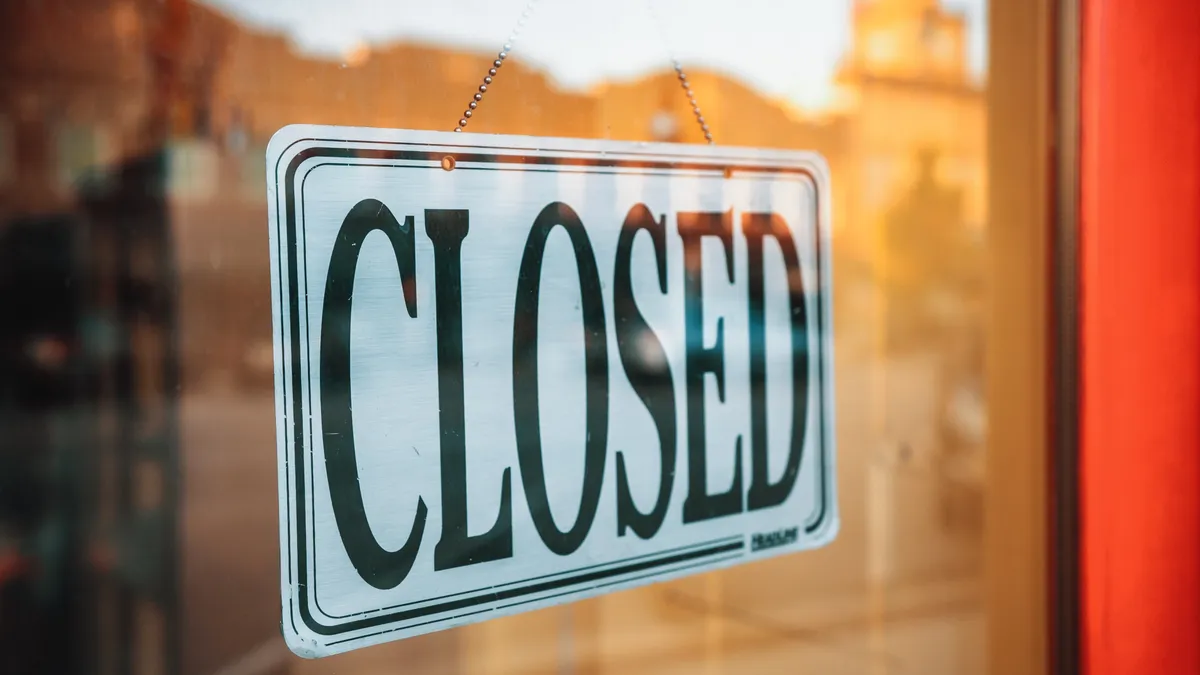Dive Brief:
- A new report from Yelp shows that permanent business closures from the COVID-19 pandemic now account for 55% percent of all closed businesses since March 1, a 14% increase since June. For restaurants, the picture is even more grim, with a 60% permanent closure rate, or a 23% increase since June 15. That equates to 15,770 permanent closures.
- Restaurants now reflect the highest total number of business closures, exceeding retail rates. Unlike retail, restaurant closures have fluctuated from March through July based on the rapidly evolving and disparate mandates that have been put into place at local levels.
- States that have experienced the biggest COVID-19 surges in June, including Florida, Texas, Georgia, South Carolina and Nevada, also experienced an over 50% increase in consumer interest in restaurants, bars, nightlife and gyms in May. States with the largest decrease in COVID-19 cases in June experienced relatively flat consumer interest in these segments the month prior.
Dive Insight:
Yelp's latest research paints an even bleaker picture for the restaurant industry's near future than the report it released on June 25.
Perhaps the most interesting part of data, however, is that it illustrates a "statistically significant" correlation between an increase of consumer interest in restaurants, bars and nightlife in May and a rise in COVID-19 cases in June. According to Yelp, consumers in Florida showed a more than 100% increase in interest activities like going out to eat in May. In June, coronavirus cases surged by nearly 530% in the state.
This correlation has been echoed by another recent report from JP Morgan, which found that higher restaurant spending seemed to be linked to a faster spread of the coronavirus three weeks later.
This crystallizes the major challenge for restaurants fighting to survive the pandemic. Many operators can't stay in business without in-person diner traffic, and many restaurants have gotten creative to convince customers to return — adding outdoor tables in parking lots, for example — but these waves of consumers could fan the flames of the virus and spark more dining room lockdowns, which puts them back at square one.
As the correlation between dining out and rising cases becomes increasingly clear, customers are also becoming more wary of visiting restaurants. This obstacle may have been more manageable earlier in the pandemic, but it is costly for restaurants to bring their staff back and to add new safety measures as federal aid begins to run out and landlords that may have been forgiving initially lose patience. One restaurant in California spent a month preparing to reopen, only to close after five hours following a renewal of the state's indoor dining ban.
Though 15,770 permanent closures is a grim number, it has yet to reach initial closure estimates from the early days of the pandemic — though there is still time. The Independent Restaurant Coalition, for example, forecast that as many as 85% of independent restaurants could permanently close by the end of the year. It's possible that a second round of shutdowns in major states, like California's, could accelerate the permanent closure rate.











